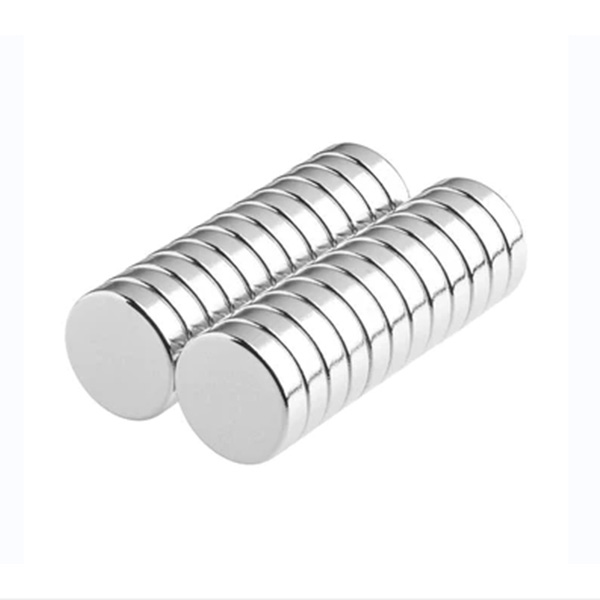
Disc magnets are flat, disk-shaped magnets that are typically made of materials such as neodymium, samarium-cobalt, or ferrite. They are known for their strong magnetic properties and ability to produce a concentrated magnetic field.
Disc magnets are often used in a variety of applications, including motors, generators, sensors, and speakers. They are available in a wide range of sizes and shapes, and can be found in many grades, each with its own specific properties. Disc magnets are typically easy to install and are durable, making them suitable for use in a variety of applications and environments.
Some features and advantages of disc magnets include:
Strong magnetic properties:
Disc magnets are known for their strong magnetic fields, which make them suitable for use in a variety of applications that require a concentrated magnetic field.
Versatility:
BDisc magnets can be found in a wide range of sizes and shapes, which makes them suitable for use in a variety of applications.
Cost-effective:
DiDisc magnets are typically less expensive than other types of magnets, which makes them an attractive option for a variety of applications.
Easy to install:
Disc magnets are easy to install and can be mounted using adhesive or mechanical fasteners.
Wide temperature range:
Disc magnets are capable of operating over a wide temperature range, which makes them suitable for use in a variety of applications where temperature changes may occur.
We can custom manufacture Disc magnets to your exact specifications.
There are several methods for producing disc magnets, including:
Powder metallurgy:
This method involves mixing a magnetic material with a binder to create a slurry, which is then pressed into a mold to form the desired shape. The mold is then heated to cure the binder and harden the magnet.
Isotropic pressing:
This method involves pressing a magnetic material into a mold using high pressure to form the desired shape. The magnet is then heat-treated to improve its magnetic properties.
Injection molding:
This method involves injecting a molten mixture of a magnetic material and a binder into a mold to form the desired shape. The mold is then cooled and the magnet is removed.
Sintered process:
This method involves heating and pressing a mixture of magnetic powders together to form a solid magnet. The magnet is then heat-treated to improve its magnetic properties.
Bonded process:
This method involves bonding together magnetic particles using a binder to form a magnet. The magnet is then cured to harden the binder and improve its magnetic properties.
There are many materials of disc magnets available, and the appropriate grade will depend on the specific application. Some common materials of disc magnets include:
Neodymium (NdFeB):
Neodymium magnets are made of an alloy of neodymium, iron, and boron, and they are known for their strong magnetic properties. They are available in a wide range of grades, including N35, N38, N42, N45, N48, N50, and N52.
Samarium-cobalt (SmCo):
Samarium-cobalt magnets are made of an alloy of samarium and cobalt, and they are known for their high temperature resistance and strong magnetic properties. They are available in a wide range of grades, including SmCo5 and SmCo26.
Ferrite (Ceramic):
Ferrite magnets are made of a type of ceramic material, and they are known for their low cost and good resistance to demagnetization. They are available in a wide range of grades, including C5, C8, and C10.
It's important to note that the specific properties of a disc magnet will depend on its grade and manufacturing process. It's always a good idea to consult with a manufacturer or supplier to determine the best grade of magnet for your specific application.
We provide Disc magnets according to your customized requirements.
Disc magnets are used in a wide range of applications due to their strong magnetic properties and ability to produce a concentrated magnetic field. Some common applications for disc magnets include:
Motors:
Disc magnets are used in motors to produce a magnetic field that drives the rotation of the motor.
Generators:
Disc magnets are used in generators to produce a magnetic field that is used to generate electricity.
Sensors:
Disc magnets are used in sensors to detect the presence or absence of a magnetic field.
Speakers:
Disc magnets are used in speakers to produce a magnetic field that drives the movement of the speaker cone and produces sound.
Separation:
Disc magnets are used in the separation of ferrous materials from non-ferrous materials in recycling and processing operations.
Holding:
Disc magnets are used to hold objects in place, such as in the construction of magnetic boards or in the closure of bags or other containers.
Scientific instruments:
Disc magnets are used in a variety of scientific instruments, such as mass spectrometers and MRI machines.
Toy magnets:
Disc magnets are also used in toys, such as magnetic building sets and desk toys.
Service every customer with care & professional.
Professional Production Base
AEMagnets is equipped with a complete set of advanced equipments and processing facilities in particular high standard cleaning room.
Strict Quality Control - ISO9001
We runs a strict quality control system involving raw materials selection, production control, product inspection, fine packing.
Timely and Attentive Service
We strive to provide fast and efficient service to meet your deadlines and provide full technical and after-sales service support.

